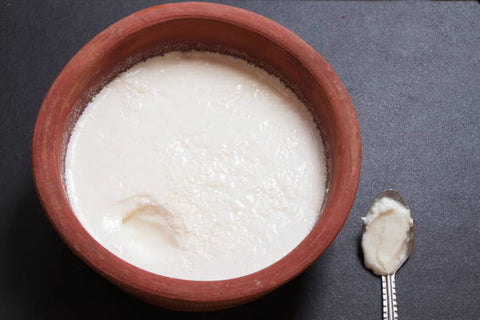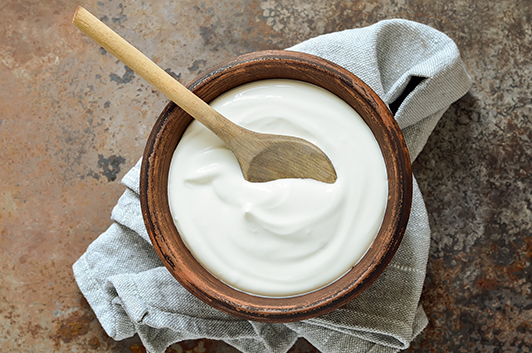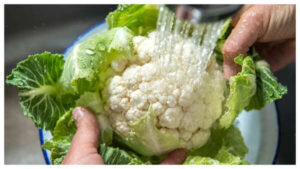Curd vs Yogurt: Why They’re Not the Same and What You Should Know

Curd vs Yogurt: Why They’re Not the Same and What You Should Know
Curd and yogurt are two dairy products that are often confused, especially in Indian households. They look similar, taste mildly tangy, and are sometimes used interchangeably. However, the truth is—they’re not the same. While both are made from milk and involve fermentation, the process, bacterial cultures, consistency, and even health benefits vary significantly. If you’ve been using them as equals in your kitchen or diet, it’s time to understand how curd and yogurt differ, and which one might be better suited to your needs.
Production
Curd is usually made at home by adding a spoonful of existing curd (as a starter) to lukewarm milk and allowing it to ferment at room temperature. The bacteria present in the starter culture multiply, converting the milk into curd. This is a natural, traditional process and the bacterial strains involved can vary from batch to batch depending on conditions like temperature and milk quality.

Yogurt, on the other hand, is made under controlled industrial settings. It uses standardized strains of bacteria—Lactobacillus bulgaricus and Streptococcus thermophilus. These are added to pasteurized milk and fermented under specific conditions. This ensures that the taste, texture, and health benefits remain consistent in every batch of yogurt.
Texture and Consistency
Curd often has an unpredictable texture. Sometimes it’s thick and creamy, other times a bit watery or grainy, depending on how it’s made and the kind of milk used. This makes homemade curd unique but inconsistent.
Yogurt, particularly the store-bought variety, has a smooth, uniform, and creamy consistency. Greek yogurt is even thicker, as it’s strained to remove excess whey. This uniform texture makes yogurt ideal for recipes where consistency is important.
Calories
Both curd and yogurt are relatively low in calories when made from plain whole milk. Typically, they contain around 60 to 90 calories per 100 grams. However, calorie content can vary depending on fat content and additives. Flavored or sweetened yogurts often contain added sugars, which increase the calorie count significantly. Greek yogurt, while high in protein, can also be slightly higher in calories due to its density.
Nutrients
Both curd and yogurt offer essential nutrients like calcium, protein, vitamin B12, and phosphorus. However, yogurt—especially Greek yogurt—generally contains more protein per serving than curd. Additionally, many yogurt brands fortify their products with extra nutrients, making them more targeted for specific dietary needs. Curd’s nutrition depends on the quality and fat content of the milk used, and can vary from one homemade batch to another.
Lactose Content
Lactose is the natural sugar found in milk that some people struggle to digest. Both curd and yogurt contain less lactose than plain milk, thanks to the fermentation process. However, yogurt, particularly those with live and active cultures, contains specific bacteria that help break down lactose more efficiently. This makes yogurt easier to digest and a safer choice for people with mild lactose intolerance. In contrast, curd’s lactose reduction depends on how well it was fermented, and the results can be inconsistent.

Probiotic Content
Probiotics are live beneficial bacteria that support gut health, immunity, and digestion. Curd does have probiotics, but the types and quantities vary greatly depending on the environment and starter used. Homemade curd might or might not contain the specific strains that are considered most beneficial.
Yogurt is a more reliable source of probiotics. It contains known and tested strains such as Lactobacillus bulgaricus, Streptococcus thermophilus, and often other added probiotics like Lactobacillus acidophilus and Bifidobacterium. If you’re specifically looking for digestive or gut health support, yogurt is generally the better choice.
Culinary Uses
Curd is deeply woven into Indian cuisine. It’s used in everyday dishes like raita, kadhi, chaas, and as a natural meat tenderizer in marinades. It’s also eaten plain alongside spicy meals to balance heat and aid digestion.
Yogurt, especially flavored and Greek varieties, is more common in Western-style dishes. It’s used in smoothies, parfaits, salad dressings, dips, and as a healthy substitute for cream or mayonnaise. While both are versatile, their uses differ based on cultural preferences and texture requirements.
Which One Should You Choose?
It really depends on your goals and preferences. If you’re looking for a natural, traditional option that fits well with Indian meals and home-style cooking, curd is a great choice. It’s easy to make, wholesome, and familiar. On the other hand, if you’re aiming for specific health benefits—like probiotic support, consistent nutrition, or ease of digestion—yogurt, especially Greek or probiotic-enriched types, may be more suitable.
In conclusion, while curd and yogurt may seem like two sides of the same coin, their differences are significant. Understanding these differences helps you make better food choices—not only for flavor, but also for your health. Whether you stick to the comfort of homemade curd or opt for the scientifically-backed benefits of yogurt, you now know what sets them apart.
Disclaimer
This article is meant for informational purposes only and should not be treated as medical advice. People with lactose intolerance, digestive conditions, or specific dietary needs should consult a healthcare provider or nutritionist before making changes to their diet.












